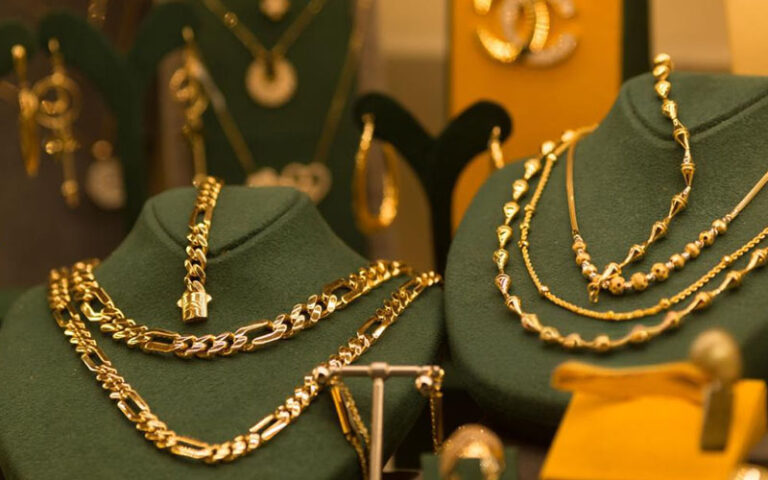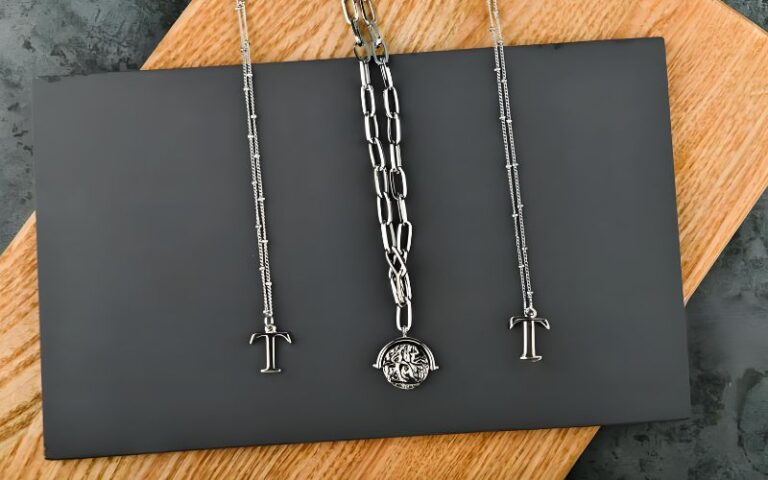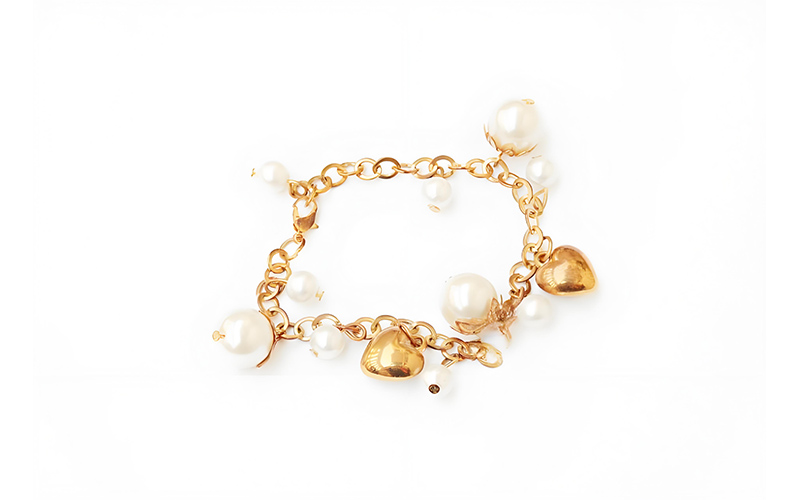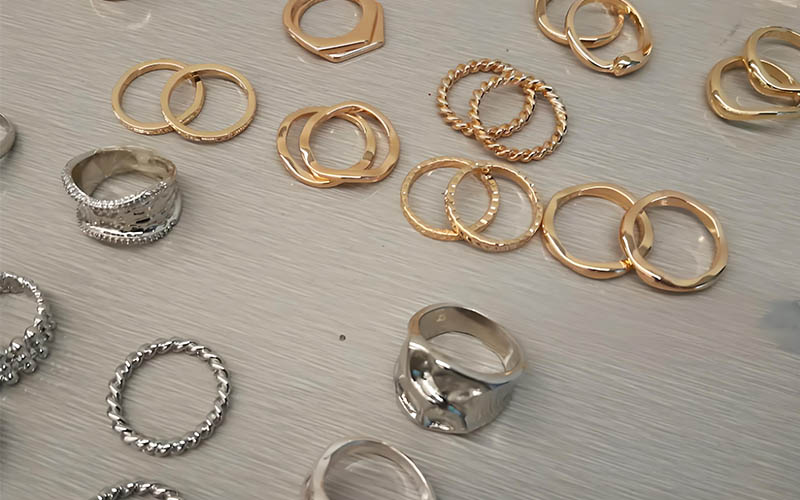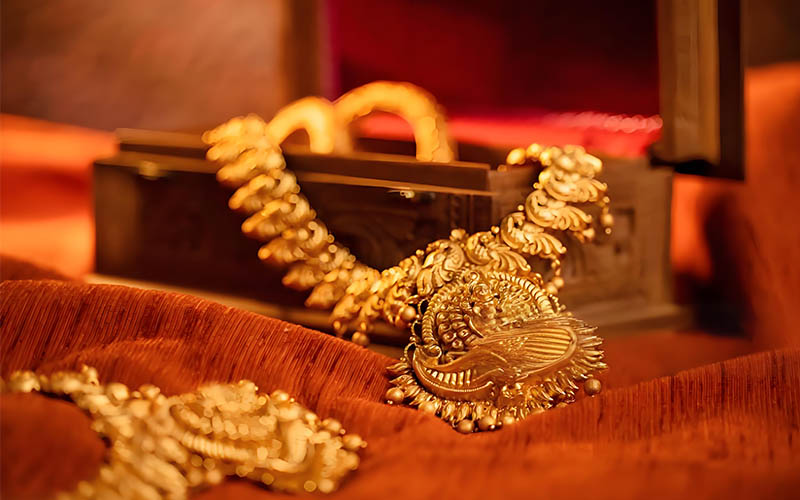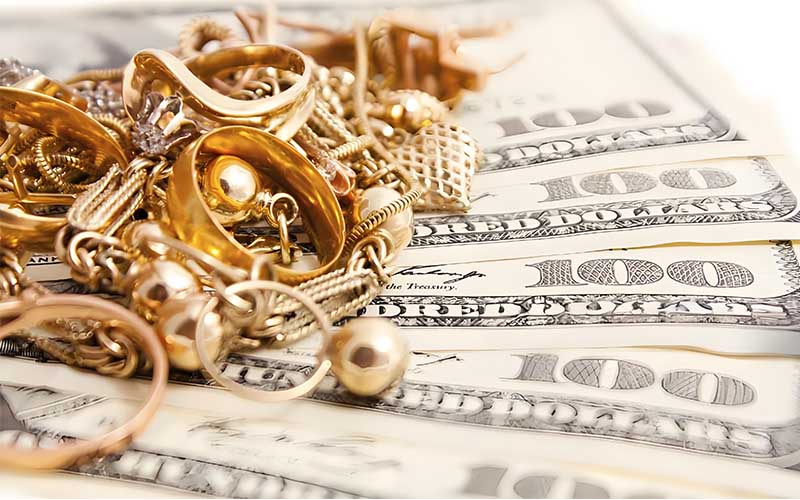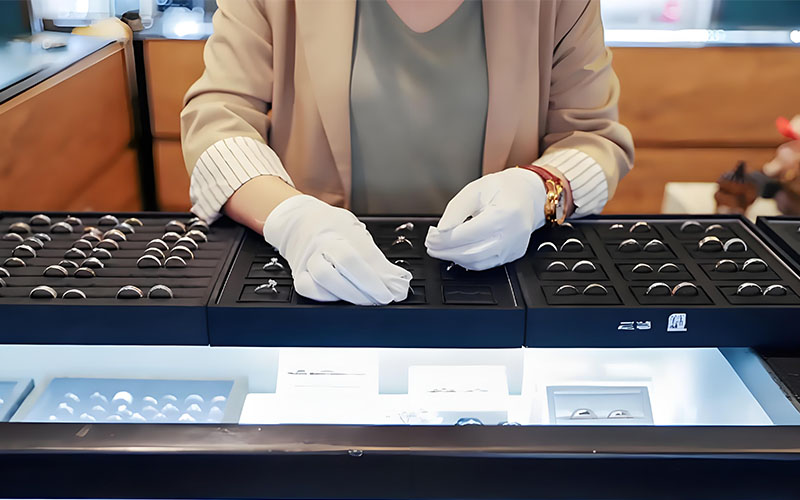
5 Tips to Optimize Your Jewelry Inventory and Track Your Jewelry Better
Hi, I’m Cooper. I’ve been around the block a few times in business. I’ve seen what works and what really doesn’t. Today, I want to talk about something super important for your jewelry business: your jewelry inventory. If you run a jewelry store or sell jewelry online, how you manage jewelry inventory can make or break you. Are you tired of guessing how much inventory you need? Do you worry about money tied up in jewelry pieces that just sit there? Or worse, do you miss sales because you don’t have popular items? This guide to managing jewelry inventory is for you. I’ll share simple ways to track your jewelry inventory and optimize your jewelry stock. You will learn how good inventory management can save you money and headaches. It’s worth reading because these tips can help your jewelry business grow.
Table of Contents
1. Why is Good Jewelry Inventory Management So Vital for Your Jewelry Business?
I’ve seen many jewelry business owners start with a passion for beautiful jewelry pieces. They love making or finding unique items. But then, the jewelry inventory part trips them up. Good jewelry inventory management is not just about counting. It’s about knowing what you have. It’s about knowing where it is. It’s about knowing how fast it sells. This knowledge is power.
Proper inventory management helps your cash flow. Think about it. Every necklace, every earring, every ring sitting in your stock is money. If it sits too long, that money is stuck. You can’t use it for other things, like new designs or marketing. Good inventory management also helps you make your customers happy. They find what they want. They get it quickly. Happy customers come back. This is why inventory management is important for any jeweler. It’s the quiet engine that keeps your jewelry business running smoothly.
Having an inventory management system in place is crucial. Without it, you are flying blind. You might order too much inventory of one item. Or you might run out of a hot seller. Both are bad for business. Good jewelry inventory management means you buy smart. You stock smart. You sell smart. It turns your jewelry inventory from a worry into a tool for success.
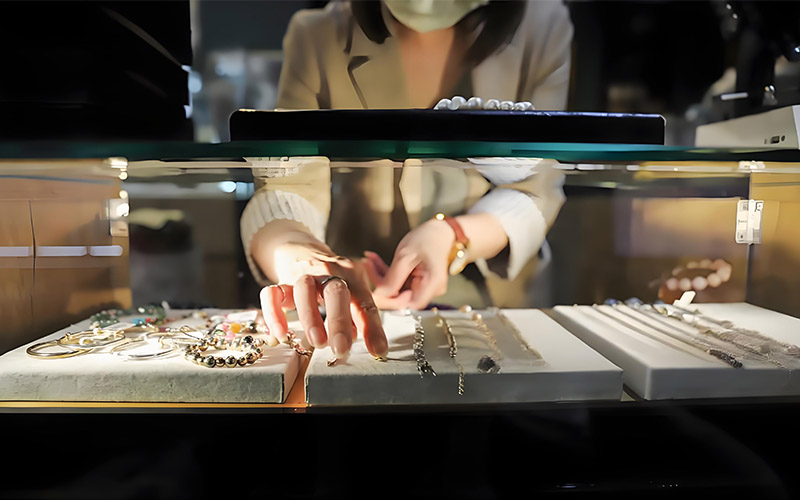
2. What Bad Things Happen if You Don’t Track Your Jewelry Inventory Well?
Let me tell you, not keeping good track of your jewelry inventory is a recipe for trouble. I’ve seen it happen. A small jewelry brand I knew had beautiful designs. But their jewelry inventory management was a mess. They guessed what to order. (Problem) They ended up with boxes of unsold jewelry pieces, especially some unique necklace styles that didn’t catch on. Their cash was all tied up. They couldn’t invest in new, potentially better-selling designs.
Then, the other side of the coin: stockouts. (Agitate) Imagine a customer comes in, ready to buy a specific earring they saw online. You look. It’s gone. You don’t know when more will come. That customer is not just lost for that sale. They might not come back. It makes your jewelry business look unprofessional. These inventory issues can pile up. You might have storage costs for items that don’t sell. You might miss out on fashion trends because your money is locked in old stock. Your jewelry inventory doesn’t just sit there; it costs you if not managed.
If you don’t track your jewelry inventory, you can’t make good choices. You won’t know what sells best. You won’t know when to reorder. You might even lose items to theft or damage and not realize it for a long time. It’s like trying to drive a car with your eyes closed. You are bound to hit something. This is why you need to manage your jewelry inventory with care.
3. How Can an Inventory Management System Help You Manage Jewelry Inventory Effectively?
So, you see the problems. What’s the fix? A good inventory management system. Now, “system” can sound big and scary. But it doesn’t have to be. An inventory management system is just a way to keep track of every piece of jewelry. It helps you know what you have, where it is, and how it’s moving. This is key to effective inventory management.
Think of an inventory management system as your helper. It can be simple, like a well-organized spreadsheet. Or it can be special inventory software. The point is, it gives you control. It helps you see your inventory levels clearly. This management system helps you make choices based on facts, not guesses. You can see which necklace sells fast and which earring design is slow. This helps you manage jewelry inventory better.
A good management system can also save you time. Instead of spending hours counting by hand, the system can give you reports. It can even warn you when stock levels are low for popular items. This means you can avoid those awful stockouts. And it helps you avoid buying too much inventory of things that don’t sell. This frees up your cash flow. It lets you focus on the fun parts of your jewelry business, like creating or finding beautiful jewelry pieces. This is how you streamline your jewelry operations.
4. Jewelry Inventory Software or a Spreadsheet: Which is Right to Track Inventory?
This is a common question I hear. “Robert, should I get fancy jewelry inventory software, or can I just use a jewelry inventory spreadsheet?” The answer is: it depends. It depends on the size of your jewelry business and how complex your jewelry inventory is. Both can help you track inventory.
For a very small jewelry business, maybe just starting out, a well-made spreadsheet can work. You can list every piece of jewelry. You can note its cost, supplier, and when you got it. You can update it when you make a sale. But, you have to be very careful. It’s easy to make mistakes in a spreadsheet. It takes a lot of discipline to keep it up to date. If you have many different jewelry pieces, it can get messy fast.
As your jewelry business grows, jewelry inventory management software (or a more general inventory software) often makes more sense. Good jewelry inventory software can do much more. It can track sales in real time. It can use barcode scanners. It can give you detailed reports. It can help you see fashion trends in your sales. It makes inventory counts easier. It automates many tasks. This saves you time and reduces errors. For effective inventory management in a growing jewelry store, software is usually the way to go. It’s an investment, but it often pays for itself by helping you optimize your jewelry inventory.
5. What are the First Steps for Organizing Your Inventory and Every Jewelry Piece?
Okay, let’s get practical. How do you start organizing your inventory? The first step is to know what you have. This means doing a full inventory count. Yes, count every piece of jewelry. It might take time, but it’s so important. This gives you a starting point. This inventory is essential for control.
Once you know what you have, you need a system to organize your jewelry. Give each item a unique name or number. This is often called a SKU (Stock Keeping Unit). Think about how to group your items. Maybe by type: necklace, earring, rings, bracelets. Maybe by material: gold, silver, gemstones. Maybe by supplier. Or maybe by collection if you are a jewelry brand. Choose a way that makes sense for your jewelry business inventory.
Then, decide where to keep every piece. Good storage is key. Keep similar items together. Make sure they are safe and easy to find. Label shelves or drawers clearly. If you have a jewelry store, you need a system for your display items and your backstock. Keeping track of your jewelry is much easier when your inventory organized. This makes it simple to find items for customers or when you need to check stock levels.

6. How Often Should You Audit Your Jewelry Pieces and Stock Levels?
Doing an audit of your jewelry inventory is like going to the doctor for a check-up. You need to do it regularly to make sure everything is healthy. An audit means you physically count your jewelry pieces and compare that count to what your inventory system (whether it’s jewelry inventory software or a spreadsheet) says you have. This helps you find any problems.
How often should you do a full audit? For many jewelry business owners, once a year is a must, often for tax reasons. But I think that’s not enough for good inventory control. Things can go wrong in a whole year. I suggest doing smaller, regular checks. This is called cycle counting. Maybe you check one category of jewelry pieces, like all your necklace stock, one week. Then another category, like every earring, the next week.
These regular checks help you catch errors early. Maybe an item was sold but not recorded. Maybe something is missing. Regular audit checks also keep your inventory records accurate. Accurate records mean you can trust your sales data and make better decisions about what to order. It’s a key part of managing inventory well. Don’t wait for a big surprise at the end of the year.
7. Can Using a Barcode System Really Streamline Your Jewelry Inventory?
I’m a big fan of anything that makes work easier and more accurate. A barcode system can do just that for your jewelry inventory management. Think about it. Each jewelry piece gets a small tag with a barcode. When you sell an item, you just scan the barcode. The sale is recorded instantly in your inventory management system.
This does a few great things. First, it’s fast. Much faster than typing in item numbers. Second, it’s accurate. It cuts down on human errors. No more typing the wrong code for a necklace or earring. This helps streamline your jewelry inventory processes a lot. It makes inventory counts quicker too. You just scan the barcode on each item.
Using a barcode system helps you track sales in real time. This gives you up-to-the-minute info on your inventory levels. It makes your jewelry inventory software even more powerful. Some people worry about the cost of a barcode scanner and printer. But for many jewelry business owners, the time saved and the errors avoided make it a good investment. It’s a big step up for managing your jewelry inventory professionally.
8. What Sales Data Must You Track to Optimize Your Jewelry Inventory?
To truly optimize your jewelry inventory, you need to become a bit of a detective. And your main clues come from your sales data. Just knowing what sold is not enough. You need to dig deeper. What sales data should you track? First, track which specific jewelry pieces are selling. Not just “necklaces,” but which necklace designs.
Second, track how fast items sell. This is your sales velocity. Some jewelry pieces might fly off the shelves. Others might sit for months. Knowing this helps you decide what to reorder and how much inventory to keep. Also, track sales by season or fashion trends. Do certain earring styles sell better in summer? Does a particular necklace become popular after a celebrity wears it? This data is gold.
You should also look at profit margins for each item. An item might sell well, but if the profit is tiny, maybe it’s not worth stocking heavily. Good inventory management software can help you gather and analyze all this sales data. When you understand your sales data, you can make smart choices. You can stock more of what sells well and makes good money. You can discount slow-moving items to free up cash. This is how you optimize your jewelry inventory.
9. How Do You Stop Overstock and Stockouts in Your Jewelry Store?
Ah, the big headaches for any jeweler: overstock and stockouts. (Problem) Overstock is when you have too much inventory of certain jewelry pieces. This ties up your cash flow. It takes up space. It might even go out of style before you can sell it. (Agitate) Then there are stockouts. That’s when a customer wants to buy something, like a popular necklace or earring, but you don’t have it. You lose the sale. The customer is unhappy. It’s a terrible feeling.
So, how do you find the right balance? (Solution Intro) It comes down to smart jewelry inventory management. Use your sales data (like we just talked about) to forecast demand. Know your lead times – how long it takes your supplier to get new stock to you. Set reorder points for your popular items. This means when your stock of a certain jewelry piece drops to a certain level, you automatically reorder. Good jewelry inventory software can help with this.
Also, consider strategies like offering a discount or a promotion on items that are becoming overstock. This can help move them before they become a bigger problem. For stockouts, having a reliable supplier who can deliver quickly is key. Sometimes, for very expensive or custom jewelry, you might even work on a made-to-order basis. This avoids stocking items that might not sell. Careful inventory control is your best defense against overstock and stockouts.
10. How Can a Good Supplier Change Your Inventory Management Strategy for the Better?
Choosing the right jewelry suppliers is a really big deal for your inventory management strategy. A good supplier is more than just someone who sells you jewelry pieces. They are a partner in your jewelry business. (Solution) Think about this: if your supplier has long, unreliable delivery times, you have to keep more jewelry inventory on hand to avoid stockouts. This means more of your money is tied up.
But what if you had a supplier who understands the challenges of jewelry inventory management? That’s where we, as manufacturers, try to make a difference. We know that carrying too much inventory is a risk for you. So, we’ve focused on being flexible. You don’t always need to order huge amounts of a new necklace or earring design from us. We can often produce smaller batches efficiently. This means you can test new jewelry pieces without a massive investment. It helps you manage your jewelry inventory and cash flow much better.
A responsive supplier can also help you react to fashion trends faster. If a certain style suddenly gets hot, a supplier who can provide those jewelry pieces quickly is invaluable. They help you avoid stockouts of popular items. We also focus on quality. High-quality finished jewelry sells better and has fewer returns. This means your jewelry inventory moves faster. So, when you look for a supplier, don’t just look at the price. Look for a partner who can help you with effective inventory management. That’s what we aim to be.
11. My Top 5 Tips for Keeping Track of Your Jewelry and Managing Inventory Smartly.
We’ve covered a lot in this guide to managing jewelry inventory. So, let me boil it down to my top 5 tips for keeping track of your jewelry and managing inventory like a pro. These are things I’ve learned over the years that can really help your jewelry business.
First, know what you have. Do regular inventory counts or cycle counts. Don’t guess. Use an inventory system, whether it’s a spreadsheet or jewelry inventory management software, to keep accurate records of every piece of jewelry. Second, use your sales data. This data tells you what’s hot and what’s not. It helps you decide what to stock, when to reorder, and what jewelry pieces might need a discount or promotion.
Third, organize your jewelry inventory physically. A clean, well-organized stockroom or display makes it easy to find items and see what you have. Use clear labels. This makes managing your inventory much less stressful. Fourth, build good relationships with your jewelry suppliers. A reliable supplier who offers flexibility and quality can be a huge asset in your inventory management strategy. They can help you avoid overstock and stockouts. As a supplier ourselves, we focus on being this kind of partner for your jewelry brand. We understand that your success with jewelry inventory helps us too.
And my fifth tip: embrace technology if you can. A good jewelry management system, especially jewelry inventory software with barcode scanning, can save you so much time and prevent costly errors. It helps you track sales in real time and optimize your jewelry inventory. It’s an investment that can really pay off in the long run for your jewelry business inventory. Taking control of your jewelry inventory effectively is one of the smartest moves you can make.

